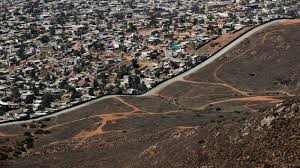Mexico origin history

Mexico, as a North America and the third largest country in Latin America across Brazil and Argentina. Though there is little truth to the long-held stereotype of Mexico as a slow-paced land of subsistence farmers & Mexican society is characterized by extremes of wealth and poverty with a limited middle class between an elite cadre of investors on the one hand , masses of rural and urban poor . But, in spite of ,the challenges those faces as a developing country. Specially , Mexico is best economic and political forces in Latin America. It has a lot of dynamic industrial base, also vast mineral resources, extra wide-ranging service sector and the world’s largest population of Spanish speakers about two and a half times whose Spain or Colombia. As its selected an official name , the Estados Unidos Mexicanos ( UMS).
 source
source
Half of the Mexican people live in the centre of the country whereas vast areas of the north and the tropical south are settled. A lot of Migrants from impoverished rural areas have poured into Mexico’s cities and nearly four-fifths of Mexicans, now, live in urban areas. Mexico City, the capital, is one of the most popular cities and metropolitan areas in the world. Mexico has experienced a turning series economic booms, leading to periods of impressive social gains, followed by busts with significant declines of living standards from the middle and lower classes. The country support of economics in many strong ways , on the teams of them right now , Usa, canada & also other country in the american country through the North American Free Trad Agreement ( NAFTA) .
Land
Sharing the border throughout its northern site with the United States, Mexico is bounded to the west and south by the Pacific Ocean, the corner of east the Gulf of Mexico and the Caribbean Sea. the regions of southeast by Guatemala and Belize. Mexico also administers such as islands and archipelagoes . Including these insular territories, the roughly triangular country covers an area about three times the size of Texas. While it is more than 3000km across from northwest to southeast, its width varies from less than 217 km .
 source
Geologic origins
source
Geologic origins
Mexico is indicated as one of the most dynamic tectonic areas on the earth . It is a major part of circum-Pacific “Ring of Fire”.Among country over the world which forms the highest point in the country at 18,406 feet which rises to 17,930 feet to the southeast areas of Mexico City. These and other Mexican volcanoes are young in geologic terms. From the Paleogene and Neogene periods .volcanic forces that built much of the central and southern parts of the country. Mexico is situated on the western.
Soils
Throughout southeastern Mexico, high rates of precipitation produce yellow lateritic soils high in iron oxides and aluminum hydroxides. The richest soils in the country are the chernozem-like volcanic soils found in the Mesa Central. Deep, easily crumbled, and rich in base minerals, some of those dark soils have been farmed continuously tomany centuries. However, overuse has caused serious sheet erosion and has exposed tepetate in many areas. In the north, gray-brown desert soils occupied the largest expanses. High in lime & soluble salts, they can be extremely productive when irrigated.
 source
Climate
source
Climate
Mexico has a wide array of climatic conditions because of its topographic diversity. More than half of the country lies south in the Tropic Cancer. In those areas, tropical maritime air masses from the Gulf of Mexico, the Caribbean, and the Pacific, are attracted by the relative low pressures which occur in land. The maritime air masses are the main sources of precipitation, which is heaviest may through August. On both sides of Tropical hurricanes, spawned in oceans the country are common in the coastal lowland areas from August - October. Mexico is dominated Northern by the Sonoran , Chihuahuan deserts, , arid and semiarid conditions predominate over much of the Mexican Plateau.
 source
source
Different way of seasonal earth of maxican temparature is smoth .Often about 10 °F between the so much warm and cool months. In those areas ,winter is defined the rainy rather than the cold region . Elevation is a major climatic influence in most parts of Mexico and several vertical climatic zones are recognized. From sea level over 3,000 feet is the tierra caliente with uniformly high temperatures. For example, Veracruz is located on the Gulf of Mexico that has an average daily temperature approximately 77 °F .The tierra templada extend to about 6,000 feet and include the Xalapa city Also at an elevation of more than